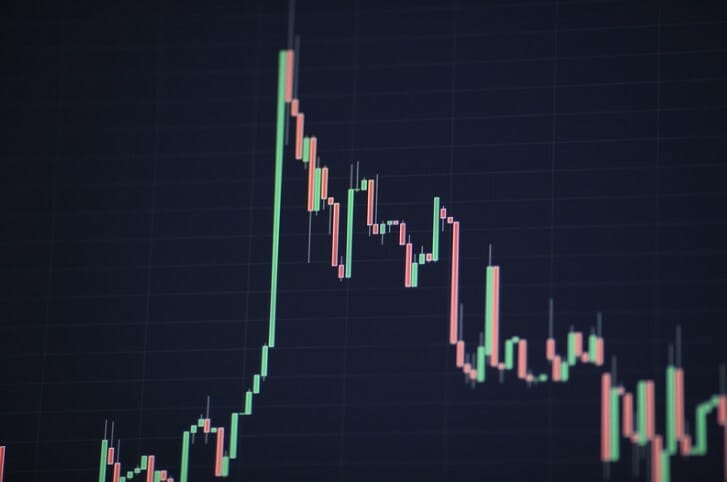As you have learned from previous posts, trading options is buying the ability to buy or sell a stock at a certain strike price. A call option means you are bullish on the stock and a put option means you are bearish on the stock. Stocks can naturally move up and down on their own depending on certain market conditions, and under those natural market conditions you can trade options and make a nice profit.
High IV (or Implied Volatility) affects the prices of options and can cause them to swing more than even the underlying stock. Just like it sounds, implied volatility represents how much the market anticipates that a stock will move, or be volatile. A stock with a high IV is expected to jump in price more than a stock with a lower IV over the life of the option.
In this post, I want to cover some of the risks behind buying options with a high volatility. A strategy that many traders use (maybe knowingly or unknowingly), but not one I would recommend, especially for beginners.

When I first got into options, I remember thinking, “Wow, trading options will be like shooting fish in a barrel around earnings time.” While there are opportunities at these times, please keep in mind its not always that easy!
When buying options that include the period of earnings announcements for the company, you will pay a much higher premium because the high implied volatility is already accounted for. Why is this so risky? I’ll try to explain with a quick example below.
High IV Example: Tesla
Let’s use Tesla (TSLA) for example, as it is a higher priced stock with fairly high implied volatility naturally. If first quarter earnings are set to be announced on April 15th, and you buy a call option on April 10th through April 24th, you are going to pay a serious premium because the market is accounting for the high implied volatility with earnings coming.
You could easily pay a $20 premium for an in the money call option during that period, compared to a $10 premium on the same option that expires a week before the earnings announcement.
What is the added risk with paying a high dollar premium for a call option through earnings? In the example above, you would need the stock to go up at least $20 before you even had a chance at making any money. Yes, we have all seen TSLA have huge jumps, but we have also seen the huge drops as well.
What if there is an unforeseen government regulation on the automotive industry and now consumers aren’t as interested in electric cars? What if a TSLA manufacturing plant in China is 50% behind on orders and no one is aware before the earnings call? Your $20 premium can turn into cents on the dollar quickly, and huge losses can rack up quickly.
In my opinion there are far too many risks of buying options with high implied volatility already accounted for on the stock. Unfortunately, the risk does not outweigh the reward in most scenarios.
High Implied Volatility During Uncertain Economic Conditions
Another perfect example of trading options in high volatility scenarios is happening right now in front of us. With crude demand fears stemming from the coronavirus, energy and stock markets have been down as much as 3-5% daily. During those down days, implied volatility will go through the roof and make premiums extremely high.

If you purchase a call option and the market continues to trend down, you can have a lot of risk and lose most if not all the high premium you paid for the option. But, if the market recovers and has a large up day, you can capture a large profit by exercising your option.
Here are three real life examples of winning and losing big on a simulator in highly volatility markets:
Tesla – TSLA – On 2/24 purchased 5 in the money call options. The strike price was $860, and I paid a premium of $31.70. The stock popped and I sold my option for a premium of $39.85 six hours later. Total profit of $4,075, not a bad day in the office!
Amazon – AMZN – After hitting a nice profit on TSLA, I thought why not Amazon? On the afternoon of 2/24 I purchased 10 in the money calls with a premium of $36.25. News of the coronavirus turned sour and tech stocks started to dive. I got out quick, but only collected a premium of $33.10 on the option. Total loss of $3,150, luckily, I was still ahead after getting greedy to end the day.
Apple – APPL – During high market volatility with energy and stock markets extremely volatile, purchased 10 call option in the money on Apple for $7.30. The DOW dropped over 3,000 points in one week and I finally sold each option for $0.06…your read that right. Total loss of $7,240, putting me well below the red line on my options trying to leverage a high implied volatility market.
Long story short – trading high implied volatility options is a day trading game, and as you remember from my first article on trading, the long game is always best.
Another Problem with High IV: “IV Crush”
The expression “implied volatility crush” or “IV crush” refers to a sudden and sharp drop in implied volatility that will trigger a steep decline in an options value.
Most times an IV crush will occur after a scheduled event takes place; like a quarterly earnings report, new product launch, or a regulatory decision from the government.
For example, when energy and stock prices increase it can result in high implied volatility. However, the opposite can occur on large up days in the market, which we have also seen as of late. If you see a stock go through the roof one day, implied volatility could crush on a call option.
In the last three weeks if you were able to predict each day whether the DOW will be up 1,000 or down 1,000 points, there was some strong earning potential. But at the same time, if you miss, there is a tremendous amount of downside.
Let’s be honest, none of us can accurately predict the market, especially in volatile times like we have seen in the last 6-8 weeks.
I know by now it seems like I’m beating a dead horse, but as with stock trading, options are still much safer to invest long term (but be careful with time decay!). High IV is something all options traders will experience at one point or another, so be aware of its effects.
Don’t worry, I promise to eventually get into some day trading options strategy for those with the itch to move quick!
Editor’s Note: By the way, looking for some cool merch?
I managed to score a 10% from the founder of Thetagang Merch, use offer code EINVEST10 for 10% off all orders! (Store link)
Related posts:
- How to Trade Options: A Beginner’s Guide to the Risks (and Rewards) Table of Contents [Click to Skip Ahead] Intro to Options The Two Most Basic Options Contracts The Options Killer: Time (Theta) How to Create a...
- My Bag Holder Experience in Tesla — Seeing -55% Disappear in 25 Minutes A bag holder is a stock market sucker. This is an investor who buys a stock, hoping it goes higher, but then gets caught “holding the...
- 4 Popular “Theta Gang” Strategies to Collect Premium from Options What is theta gang? Simply put, these are options trading strategies that capitalize on the fact that the prices of options decay over time. Instead...
- Taking Worst Case Scenarios of Selling Covered Calls – It’s Not That Bad! While I am new to the options game myself, I have learned quickly that options are like stocks, but on steroids. In this article I’m...

